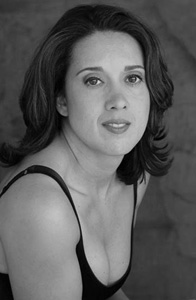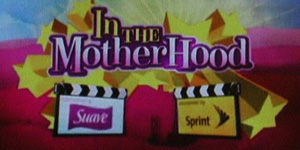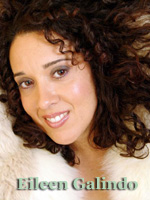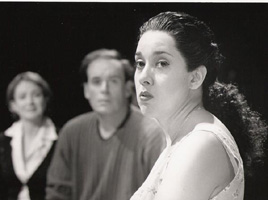Eileen Galindo, Actress and Voice-Over Artist – Taking Part in Webisodes, the New Wave of the Future.
 Eileen Galindo is an actress who has appeared in several TV shows and films, including The Super, “NYPD Blue,” “Strong Medicine,” “ER,” “Girlfriends,” “Third Watch,” “Law & Order,” etc. She is also a successful voice-over artist and has performed in “Dora the Explorer,” “In Justice,” and “Phineas and Ferb.” Her theater work is extensive, as she has appeared in the following plays: “Romeo and Juliet,” “Real Women Have Curves,” etc.
Eileen Galindo is an actress who has appeared in several TV shows and films, including The Super, “NYPD Blue,” “Strong Medicine,” “ER,” “Girlfriends,” “Third Watch,” “Law & Order,” etc. She is also a successful voice-over artist and has performed in “Dora the Explorer,” “In Justice,” and “Phineas and Ferb.” Her theater work is extensive, as she has appeared in the following plays: “Romeo and Juliet,” “Real Women Have Curves,” etc.
I visited Eileen at her home in Los Angeles and she spoke of her experiences as a voice-over artist, an actress, and the business in general.
You’re on an Internet show?
I’m doing a show called “In the Motherhood.” It airs on inthemotherhood.com. It stars Leah Remedy, Chelsea Handler, and me; and Lanie Kazane plays the mom. Webisodes are growing in our market. They are finding a way to tie in content with products. For example, my character, Maria, is talking about the trouble she’s having with her life and is talking on her Sprint cell phone.
What is a webisode?
It is written just like a regular sitcom about five minutes in length, and they cut to consumer- generated products.
generated products.
You’re also a voice-over actress?
I do a lot of cartoons. I play the mom on “Dora the Explorer” on Nickelodeon CBS, “Phineas and Ferb” from the directors of “Sponge Bob Square Pants” and “Hey Arnold“. This one‘s about two little boys and their little adventures. I play a nosy next-door neighbor. It’s a lot of fun. You get to use your imagination. Your voices are matched to a cartoon character, and you get to hide behind the animation.
How did you get into that?
I’ve always done voices since I was a little kid. My parents gave me a tape recorder. I would do radio dramas. (Eileen knocks on something and shouts, “Who’s there?“) I would do the shoes climbing up the stairs. I would do the whole thing. Pretty much I lived in my mind. A lot of voice-over artists live in their heads. You can do a whole cartoon yourself.
So in order to be a voice over artist, you have to be borderline schizophrenic?
It helps, and to be un-medicated. I also do commercials. I have accounts for Suburu, Burger King, etc. Every job seems to top itself. I learn something from everything I do. My philosophy towards acting and being in this business is that I enjoy the work when it’s there. And when it’s not there, I’m always looking for the next job. I pretty much don’t focus on the down time. I’ve got real estate investments, voice-over work … there is always something I have to do.
And when it’s not there, I’m always looking for the next job. I pretty much don’t focus on the down time. I’ve got real estate investments, voice-over work … there is always something I have to do.
What advice would you give to somebody trying to make it in this industry?
I fall into a category I think the most important thing is to work on your craft and to be cordial and friendly with everyone you work with. Because the same people you see on the way up are the same people you’ll see on the way down. Just try to be as professional as possible. And try not to take it too personal. When you don’t get chosen for a project, it’s not anything personal. I look at it this way. It’s apples and oranges. I try to be the best orange I can be. If they’re picking an apple, I’m not going to be picked, but if they’re picking an orange that day, I try to be the best orange available that they are going to pick me out of the lot. Or give them something that they weren’t looking for so they can change their minds.
As an actress/voice-over artist, in order for you to get work, do you need an agent or is it something you do on your own?
Yes. A lot of people think I have only one agent. I actually have fifteen agents. When you add up all the agencies. I work with three different agencies, one on the West Coast and one on the East Coast. When you count all of the agents, agents alone are fifteen, not including assistants. Each agent has an assistant. I deal with about thirty people a week, depending on what the project is. That’s how you keep working. Get with agencies that are a fair size. It doesn’t have to be with ICM to get full coverage or representation. I have one agency that just represents me for voice-overs, another one that represents me for commercials, and another one that represents me for television, film, and theater.
on what the project is. That’s how you keep working. Get with agencies that are a fair size. It doesn’t have to be with ICM to get full coverage or representation. I have one agency that just represents me for voice-overs, another one that represents me for commercials, and another one that represents me for television, film, and theater.
I’d like to demystify this business for people. I think people think it’s really hard to be an actor, and it’s not. You get to do what you love to do. I really love what I do, whether I’m getting paid for it, or I’m taking a class. For me, I get to live my dream every day!
Tell me about your philanthropic efforts.
I have a philosophy about giving. When you get, you have to give to keep the energy going. When Hurricane Katrina hit, a lot of people were donating to the Red Cross or Salvation Army. I have difficulties with a lot of traditional charitable organizations. They have such a high overhead, only 20% of your dollar actually goes to help whoever is in need. The rest goes to administrative costs. The Red Cross, who do a lot of great work, take in your money, and they decide where your money goes. And then they bank the rest of the money for future catastrophies. That may be a great way to look at things for some people, but when you give your hard earned money, you want to know that it’s going to the cause for which you are donating. So when Katrina happened, I had six empty apartments. I could afford to put up one family. I got an immediate response from one couple and people donated towels, bed linens, bed, furniture. One of my friends put me on to the “List,” a closed email network for well-to-do celebrities. Suddenly there were Jaguars and Rolls Royces donating designer clothes and gift certificates for stores in town. They were happy to see where their money was going.
You are also involved with SAG?
 I was on the board for Screen Actors Guild for three years. I worked a lot with Actors’ Equity Association, which is the stage union, the primary thrust when I first turned professional in this business. I got politically active right away. At that time, there were very few people of color in any stage shows on Broadway. If you were a black performer, you got to do a show if there was a black show on Broadway. If there was tap dancing required, then you had a job. And if they were doing a revival of West Side Story, then all the Latinos could work. If they were doing Pacific Overtures, all the Asians could work. But other than that, they basically kept you out. We started a movement, a nontraditional casting project, and the Actors’ Equity Association and the Equal Opportunity’s community there, the EEOC … we started to picket, to institute meetings with producers from the Producers’ League to let them see our side of it. And it did work. By the end of the first three years, Broadway started becoming more integrated. Will Rogers Follies, which was a Broadway show that had predominantly Anglo dances…they said at that period of time in history, there wouldn’t be any African-Americans in the show. We proved them wrong. Stephanie Pope, Broadway singer and dancer, starred in the show and took a part that would have originally been played by a Caucasian. That was huge! We were relegated to chorus, and chorus that was ethnic specific. So things started to change. It wore on me. It was very taxing, but I am really happy that I was involved in that.
I was on the board for Screen Actors Guild for three years. I worked a lot with Actors’ Equity Association, which is the stage union, the primary thrust when I first turned professional in this business. I got politically active right away. At that time, there were very few people of color in any stage shows on Broadway. If you were a black performer, you got to do a show if there was a black show on Broadway. If there was tap dancing required, then you had a job. And if they were doing a revival of West Side Story, then all the Latinos could work. If they were doing Pacific Overtures, all the Asians could work. But other than that, they basically kept you out. We started a movement, a nontraditional casting project, and the Actors’ Equity Association and the Equal Opportunity’s community there, the EEOC … we started to picket, to institute meetings with producers from the Producers’ League to let them see our side of it. And it did work. By the end of the first three years, Broadway started becoming more integrated. Will Rogers Follies, which was a Broadway show that had predominantly Anglo dances…they said at that period of time in history, there wouldn’t be any African-Americans in the show. We proved them wrong. Stephanie Pope, Broadway singer and dancer, starred in the show and took a part that would have originally been played by a Caucasian. That was huge! We were relegated to chorus, and chorus that was ethnic specific. So things started to change. It wore on me. It was very taxing, but I am really happy that I was involved in that.
 Lastly, where do you see webisodes going in the future?
Lastly, where do you see webisodes going in the future?
Web content is going to be huge. This is going to be the wave of the future. Our show can be downloaded to your cell phone. Everything is changing.
Visit www.inthemotherhood.com
Interviewed by Kaylene Peoples